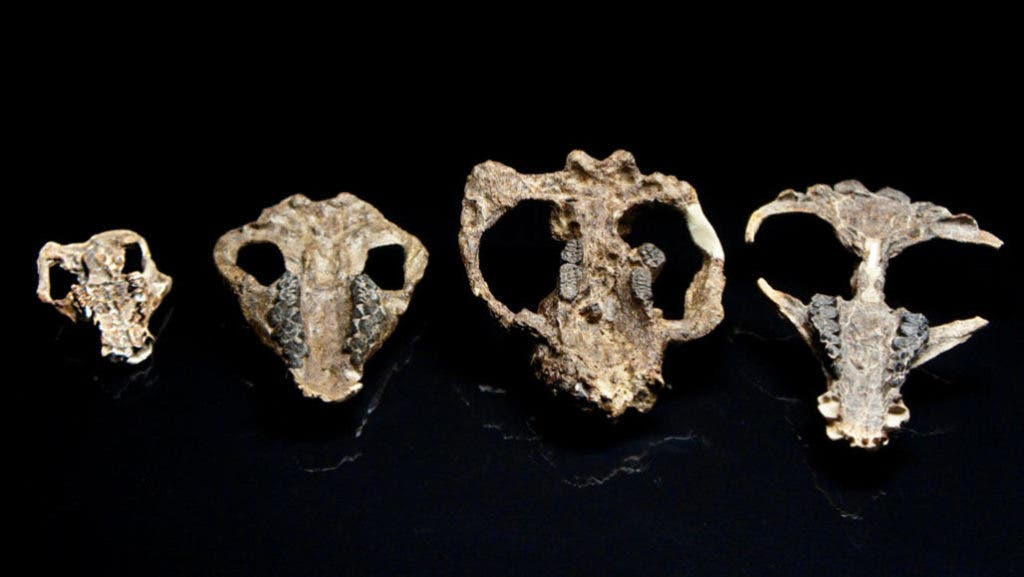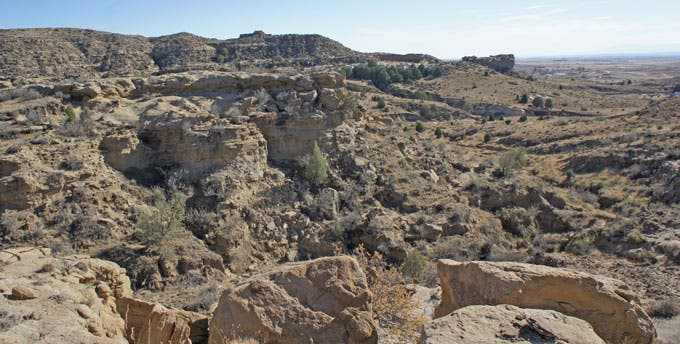
One gloomy day about 66 million years ago, disaster struck our planet. That day, an asteroid hit offshore Mexico’s Yucatan peninsula with the force of 10 billion Hiroshima bombs. As a result of the devastating impact, 75% of all animal and plant species became extinct — including all non-avian dinosaurs.
But, in the wake of the dinosaurs’ downfall, a new lineage was ready to fill in the ecological void and dominate the globe’s surface. How exactly mammals swept in during these chaotic times, however, has always been somewhat of a mystery since the fossil record in the first million years after the asteroid impact is rather poorly documented.
The discovery of a trove of exceptionally preserved fossils might change all that. Paleontologists have recently described the remains of 16 mammalian species, as well as turtles, crocodilians, and plants, encased in hundreds of fossils unearthed in Colorado.

The unlikely find comes from a site at Corral Bluffs, an outcrop in the Denver Basin, just east of Colorado Springs, not famous at all for fossils. But Tyler Lyson, a paleontologist at the Denver Museum of Nature and Science, struck gold there, finding an array of mammalian species that lived from a couple of thousand years to a million years after the killer asteroid impact.
“I split open a concretion and saw a mammal skull smiling back at me,” Lyson said. “And then I looked around and saw concretions just littering the landscape and was like, ‘oh man, here we go.’ Sure enough, we found like four or five mammal skulls within a few minutes. That was one of the most remarkable moments in my life.”
These fossils showed the remarkable growth spurt that mammalians went through after they were free to occupy ecological niches previously dominated by dinosaurs. While the biggest mammal that escaped the mayhem weighed no more than a pound (0.5kg), just 100,000 years later there were 13-pound (6-kg) specimens. Another 200,000 years later, the largest mammals had triple that weight.

And it wasn’t just the demise of dinosaurs that helped mammals. The asteroid impact also changed the plant landscape, with trees from the walnut family becoming more common, replacing the previously palm tree-dominated landscape. This was very advantageous to early omnivorous mammals, who could now supplement their insect diet with more nutritious plant-based protein.
The largest mammal from this time period was Carsioptychus, which is a distant relative of today’s hoofed mammals.
“Its premolars were very large and flat, with many weird folds, so there has always been speculation they may have fed on hard objects, such as the nuts trees in this family produce,” Lyson told National Geographic.
Another 400,000 years later, some mammals could weigh over a hundred pounds (45 kg). This period, the researchers noted, coincides with the appearance of the first plants from the bean family, whose leaves and protein-rich seed pods helped many herbivores thrive.
Besides free ecological niches and new nutritional sources, the rise of the mammals may have also been accelerated by three periods of significant warming in the million years after the mass extinction.
The idea that mammals quickly recovered after the most recent mass extinction and grew rapidly in size is not new. Where this new study shines, however, is in the fine details that describe how this transition went about. What’s more, this may just be the beginning. The newly described fossils come from a single geographical site, but there’s much to learn by including more diverse sites. Finding specimens that lived close to the post-asteroid period is not easy, but there is now a new impetus to look for them.
The findings appeared in the journal Science. A one-hour documentary produced by NOVA about the discovery, called “Rise of the Mammels” will also be available to stream on the PBS site and will air on PBS the evening of October 30.









